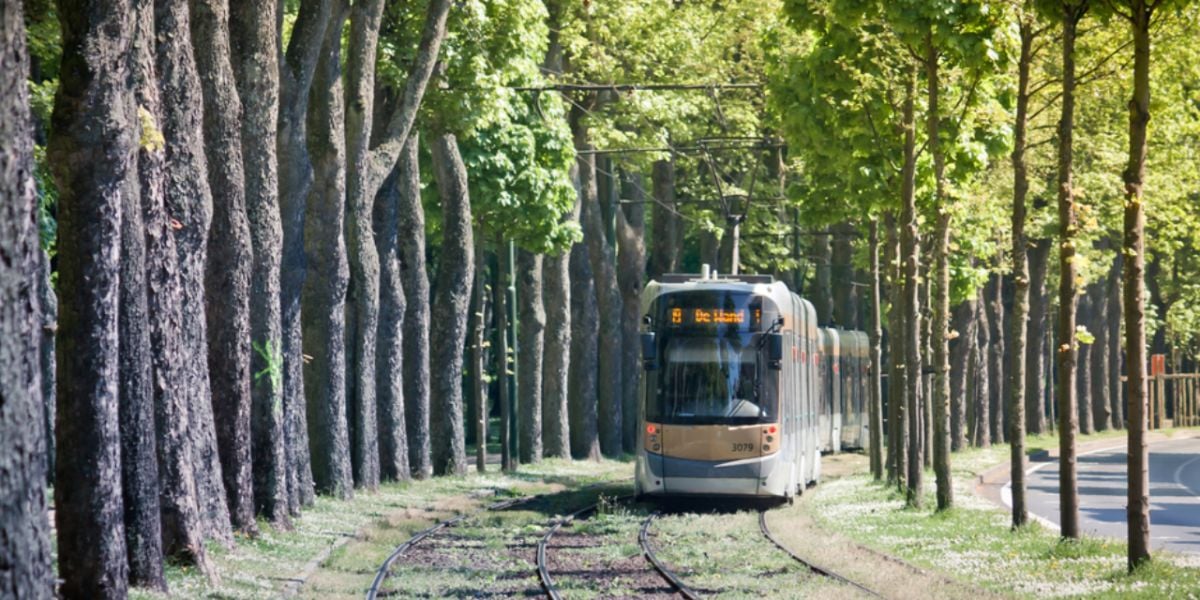
When choosing to settle in Brussels, it is essential to understand the available transport options. The capital offers a wide range of solutions: metro, tram, bus, train, bike, walking, car, taxis, and even shared mobility. While traffic often remains congested during peak hours, the public transport system is efficient and affordable. Moreover, Brussels is very well connected to the rest of Belgium and major European capitals thanks to its rail network and its airports.
Generally speaking, Brussels' public transport is efficient, even though the city suffers from significant traffic jams during the day, especially during European institution meetings. Despite this, getting around remains easy thanks to the variety of available options, depending on your preferences and destination.
Public transport in Brussels
Since Brussels' roads are very congested, the best way to get around is often by public transport. The bus, tram, and metro are the most common means of transport for getting around the city. You can also travel by taking the train from one station to another.
A monthly pass costs around €49 and allows for unlimited travel across the entire network. Many companies also offer a transport allowance to their employees. For a single journey, a ticket costs between €2.10 and €3, depending on the medium used.
Bus
Buses can benefit from reserved lanes, but they are often slowed down by traffic. In some areas, particularly around the European institutions in Schuman, traffic jams can quickly complicate the journey.
Tram
Brussels also has many tram lines crisscrossing the city, and it's an excellent way to get around. In fact, it's almost impossible to use public transport in Brussels without taking the tram at some point.
Metro
The metro is generally the fastest and most efficient way to travel around the city, although many Brussels neighborhoods do not have a metro line nearby. There are only four metro lines, which is partly why so many people use buses and trams in the city.
Good to know:
Public transport generally operates from 5:30/6:00 AM to midnight. On weekends, night buses (Noctis) take over and are very convenient if you stay in the city center after the last metros or trams.
Cycling in Brussels
Cycling is a popular pastime in Belgium, and every weekend, you'll see groups of cyclists in bright colors riding through the Belgian countryside. Despite this, Brussels is not particularly bike-friendly, and you'll find yourself competing for space on the road with the constant flow of cars. And if you still want to cycle around the city, you should always wear high-visibility clothing, put on a helmet, and follow the traffic rules.
Brussels is also deceptively hilly, so some routes will be much less pleasant and less accessible than others. Things have improved somewhat for cyclists in recent years, and many people who commute by bike no longer consider using another means of transport. For example, it can be the fastest way to get around the city when the roads are congested.
Electric bikes have also made life much easier for Brussels cyclists, making journeys more accessible despite the sometimes steep hills.
For urban travel, services like Villo! allow you to easily rent a shared bike and drop it off at one of the many stations in the city.
And if you pedal for leisure, Brussels also offers beautiful options. The Bois de la Cambre and the Sonian Forest are two must-see places to enjoy calm and green rides, away from traffic.
Walking in Brussels
Since Brussels is not a large city, it is entirely possible to walk to various places in the Belgian capital, depending on where you live. The European district, for example, is easily accessible on foot from the Brussels-City, Saint-Gilles, Etterbeek, and Schaerbeek districts. Although you can walk from one part of the city to another, it is highly recommended to carry an umbrella as the weather in Brussels is quite unpredictable.
Driving in Brussels
While driving in Brussels from one point to another can take very little time in the evening, during the day, the city suffers from frequent congestion. The reason is simple: many people from other cities flock to the capital at the same time to get to work. In fact, Brussels regularly ranks among the most congested cities in Europe.
Whether it's wise to drive to work depends on your route and workplace. Furthermore, given the number of cars on the road, parking can also be very problematic and can quickly turn a relatively short trip into an obstacle course. The number of people commuting by car is partly due to Belgian companies often providing a vehicle to their employees as part of their contract.
Shared mobility in Brussels
Nowadays, there are many ways to get around Brussels using shared mobility.
Various options have been created to encourage people to get out of their cars and use other means of transport in the city center. It is now common to see someone passing by on an electric scooter, which, for shorter trips, can be much faster than driving somewhere. Various operators (Tier, Lime, Dott, Bolt, etc.) offer apps that allow you to locate and use them in self-service. However, be careful: some areas of the capital limit or prohibit their use (pedestrian zones, prohibition to ride on sidewalks), and they must be parked in specific locations.
If you want to cycle around Brussels but don't own a bike, you can use those from the Villo network, which offers shared bikes stationed throughout the city. Hop on a Villo bike at the nearest docking station and drop it off at the station closest to your destination.
Electric scooters have also become very popular in Brussels. Various companies offer apps that help you locate them in the city. Once at your destination, you don't even need to return it to a docking station. Just leave it on the street, and someone else will quickly pick it up.
Although carpooling is still rare, it is gaining popularity as the city tries to reduce the number of cars in Brussels. On websites like Carpool.be, you can find someone to share a ride with. If you don't want to own a car in Brussels due to all the associated costs, then Cambio might be an excellent option for you. This new service offers rental cars that you can use whenever you want. They are generally scattered in various locations throughout the city.
Taxis and Uber in Brussels
The most expensive way to get around Brussels remains the taxi. But late at night, it's almost a necessity, as public transport is very limited. In recent years, alternatives like Uber, Bolt, and Heetch have gained popularity. Many Brussels residents prefer them because the rates are often lower and the apps more convenient.
In 2025, the starting fare for a taxi is about €3 during the day and €5 at night (between 10:00 PM and 6:00 AM). The kilometer rate is around €2.10/km in the center and can rise to €2.90/km outside the center. Conversely, Uber offers more variable prices depending on the time and demand, but is often slightly cheaper than traditional taxis, especially during the day.
Traveling outside of Brussels
Brussels is very well connected to other Belgian and European cities. The main stations are Brussels Central, Brussels North, Brussels Midi (or Brussels South), Brussels Schuman, and Brussels Luxembourg. From these stations, you can quickly reach major Belgian cities like Antwerp, Ghent, Bruges, Leuven, or Liège.
Trains are generally reliable, although delays can occur, especially because international trains (such as the Eurostar) are prioritized. From Brussels Midi, the Eurostar connects London in just over 2 hours, Paris in 1 hour 20 minutes, and Amsterdam in 1 hour 50 minutes.
For air travel, Brussels Airport (Zaventem) is the main international airport, with many direct flights to Europe, America, Africa, and Asia. Additionally, Charleroi Airport (Brussels South) is the hub for low-cost airlines like Ryanair or Wizz Air, convenient for traveling cheaply in Europe.
We do our best to provide accurate and up to date information. However, if you have noticed any inaccuracies in this article, please let us know in the comments section below.








